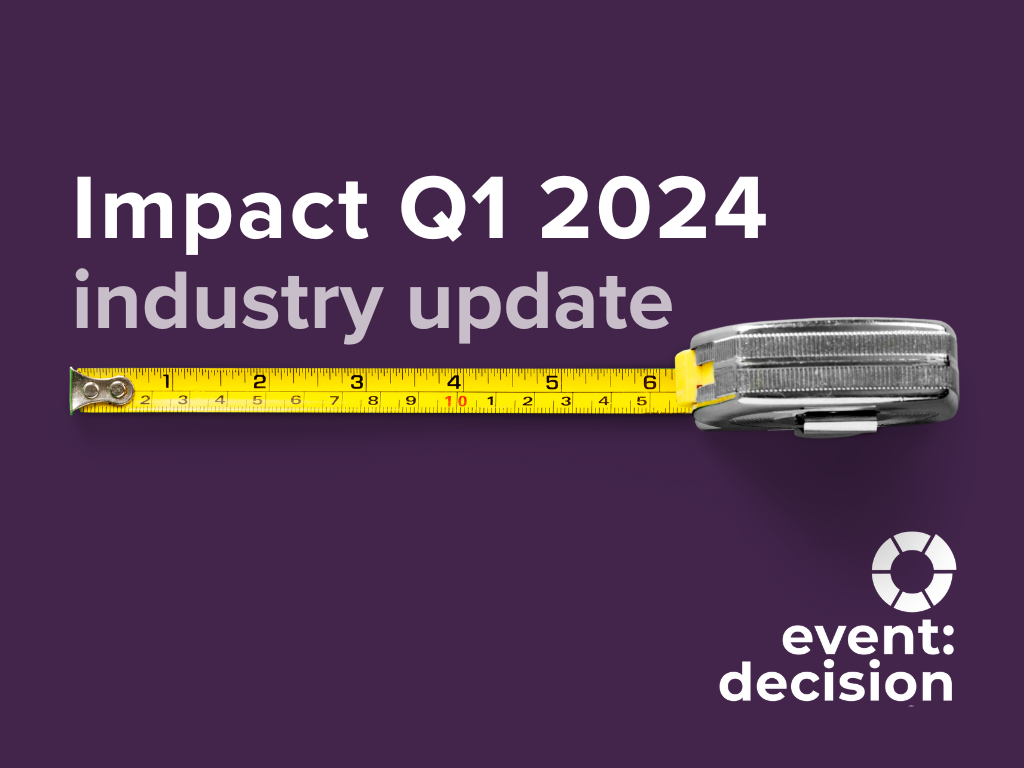The Anatomy of an Event Carbon Report
There’s a lot of talk about carbon reports.
But what does an event:decision Track report actually show you?
Events have many moving parts, all inter-dependent; there’s no beating heart without all other parts working in harmony. Delivering that is the skill of an event manager. As you know, each element will have a carbon impact and you can influence nearly all of these, to one extent or another.
You assess the impact by measuring. You can measure before your event or after your event. Or both, to demonstrate your ability in planning more sustainably.
But is understanding a carbon footprint report easy? We’ll show you just how easy it is…
Your impact
In language you understand. Travel, accommodation, energy, materials and so on.
Not shown in Greenhouse Gas Protocol’s Scopes 1-3, but measured in tonnes of CO2e so that you can align your event’s footprint with that of your organisation (SBTi tracking, for example) and against other events.

Travel – whether by plane, train or automobile and whether you can control it or not, likely the most significant element of the event carbon footprint – and the one on which you can nudge your visitors and delegates to reduce their impact. Ask us about available tools that can help.
Accommodation – again, often in the hands of visitors – but where you can, choose those with sustainable credentials (GreenKey, GreenGlobe, Greengage) and book within walking distance of your meeting space.
F&B – probably entirely within your control as an event manager. Generally accepted in the sustainability world that you should try to move from red meat into white meat, fish and then vegetarian options where you can. Local is mostly better, as is seasonal. Challenge your chefs.
Energy – can be a major factor in venue emissions. Opt for venues with renewable if you have a choice, each and every time. Ask your venue contact at show-round time. The more we ask, the more likely they will change.
Transport / Freight – another chance for you to make a difference. Source local kit and people, wherever you can. Certainly within the country of the event for kit.
Materials – the most visible element on your event/show floor. Your guests will be able to see and touch this (and likely comment), so make them reusable or recyclable and label them as such if you can.
Waste – the invisible factor, which includes food and beverage waste. Source a partner who can distribute unwanted food. Make it easy for the waste contractor to stream your waste, request your suppliers to minimise plastic in packing and shipping. This can be done – several global events have banned plastic in freight.
Virtual – the easiest way to distribute content without a significant impact. And highly recommended, in certain instances.
Benchmark
Unique to event:decision Track reports. See how your event compares to other similar events. Aim for better next time. We’ll help you!

Mitigation
Top tips to mitigate the biggest hotspots in your event footprint – specific to your event and without ripping the legs off it. You may have little control over the size of format of your event, if you’re an agency, but you can always mitigate the impact to some extent.

Offset value range
We’ll give you a range of prices for projects from reputable and certified offset providers, if this is a route you’d like to go down. Great for advance budgeting.

There’s a lot in a Track report – but it’s all simple to understand and take to your stakeholders. Chances are much of it will be news to them. We’re #EventProfs’ favourite partners in sustainability and there’s a reason for that. So if you’d like to find out more about how we could measure and advise on your event carbon footprint, get in touch.








